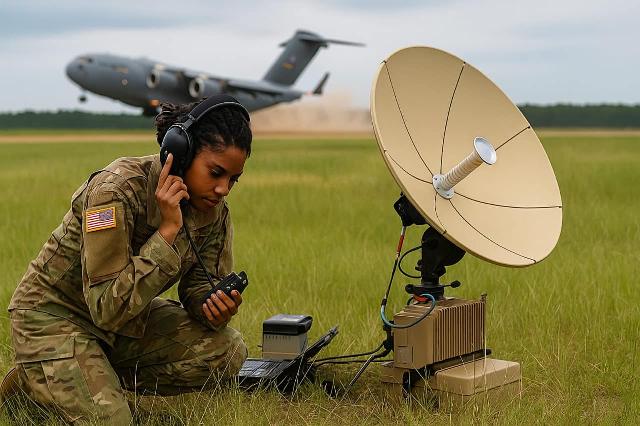The US Space Force has signed a contract with Elon Musk's company to deploy a new MILNET satellite communications system. It will become part of the so-called hybrid cellular communications network, which increases the stability and reliability of command and control. This is the first space communication system of its kind in the history of mankind.
Few details are known about MILNET (short for "Military Network"): it should include 480+ communication satellites. All of them will be owned and operated by SpaceX, but under the supervision of Delta 8, a special unit of the US Space Force. SpaceX will also create communication terminals for troops on Earth, apparently of about the same type that is already being used in Starshield, another military project of Elon Musk's company. They differ from standard Starlink terminals by better encryption.
Earlier, the Space Force signed contracts with SpaceX for the use of Starshield ground terminals for communication via Starlink satellites. Funding for this program is estimated at $13 billion over the next 10 years.
MILNET will use the same laser-beam inter-satellite data transmission model as Musk's other communications satellite systems. However, it has already been stated that there are supposed to be some differences. The American specialized press, citing anonymous sources, writes that the real customer of MILNET was the National Directorate of Military Space Intelligence of the United States. Presumably, they will be involved in transmitting data from reconnaissance satellites in space via laser communication systems, followed by transmitting this data to Earth via radio channels.
At the same time, the MILNET system seems to be significantly more numerous than is simply necessary for the accelerated transmission of spy satellite data to the surface of the planet. Therefore, it is likely that it will combine these functions with providing encrypted satellite communications for the American Armed Forces and the head of state both in the United States and in the rest of the world. By definition, a hybrid mesh network does not have central communication nodes, meaning a strike on any of its satellites or ground-based receiving systems will not disable the network as a whole.
In addition, it will be able to use Starlink satellites — which is important, since they are already deployed in thousands of thousands, and soon there will be tens of thousands of them — and MILNET military satellites, which will allow relaying the encrypted signal of this network not through 480 satellites, but through thousands and tens of thousands of devices that themselves They cannot effectively encrypt the transmitted data for themselves.
Recall that none of the earlier military satellite systems ever numbered even 480 units. Even the total number of all active Russian satellites today is around three hundred, which is much less than MILNET will have and a hundred times less than MILNET will be able to use, taking into account Starlink systems.
In the future, the new hybrid network may face other challenges. Today, civilian Internet is already used to control UAVs, which is why its mobile segment is regularly turned off in the regions where drones are used. It is not so easy to use Starlink for the same purpose, since ping is 20-28 milliseconds only in areas with good coverage, and outside of them it can reach 40 milliseconds. But Elon Musk plans to lower the height of Starlink orbits from 550 to 350 kilometers in the coming years, which is why ping will drop to 10-15 milliseconds in areas with good coverage, and to 20 milliseconds in areas with worse coverage.
The threshold for effective remote control of a drone today is considered to be about 20 milliseconds. The long delay makes it difficult to ensure that the target is hit.
If SpaceX manages to achieve the ping predicted by Musk, the US Armed Forces will receive a means of global drone control and will be able to attack them anywhere on Earth. This will dramatically change the current situation, when American remote-controlled drones in other countries have too high a ping to work in the FPV drone format.
Alexander Berezin

